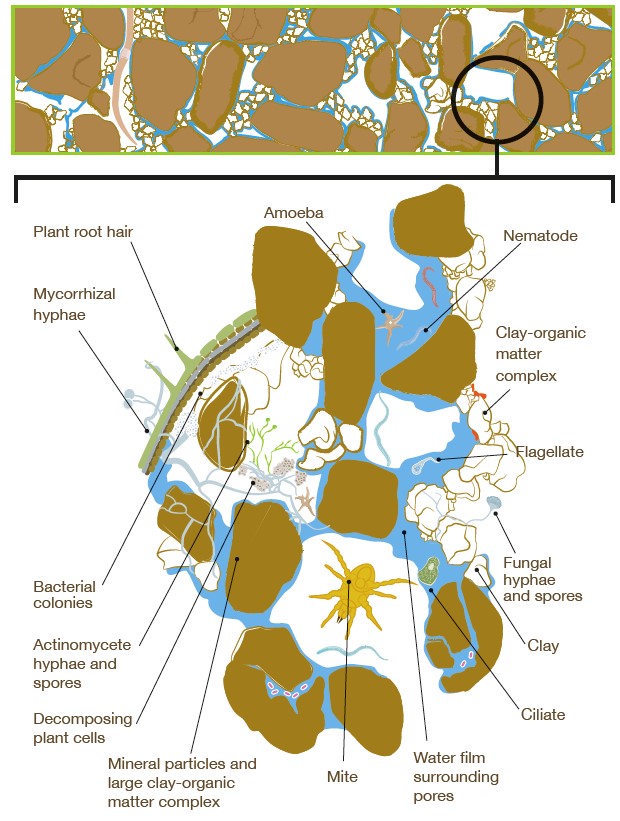- Home
- Knowledge library
- Soil organisms stabilise soil structure
Soil organisms stabilise soil structure
Good soil structure is important for aeration, root proliferation (to access water and nutrients) and better drainage. Plant roots, bacteria, fungi, earthworms, and other soil biology help stabilise soil structure by binding soil into aggregates.
Back to: The function of soil biology
Soil organisms help to develop stable aggregates
- Soil organisms produce a range of sticky compounds (glycoproteins and polysaccharide gums) that help bind clay, silt and sand particles into microaggregates
- Roots and fungi help to enmesh and bind these into larger aggregates or push tightly bound clay particles apart
- Bacteria can form protective biofilms over aggregate surfaces
- Plant roots also have a central role in structure development through drying and compression as they grow
- Earthworms change the structure of soil by burrowing and generating new stable aggregates as worm casts. This creates new microhabitats for other soil organisms and plant roots
The soil pore network defines habitat space
The soil environment shows extreme variation in space (vertical and horizontal) and time. A wide range of surface types, pore sizes, microclimates and resources form the landscape in which soil organisms live and interact.
Roots use pores of >100 µm as entry points, while root hairs, protists and fungi use pores of >10 µm. Bacteria can move in water films of only 1 µm depth.

Pore size distribution
The amount and nature of the pore space in soil is dependent on soil texture and the way in which mineral particles and soil organic matter are aggregated together.
Pore size distribution controls the balance of oxygen and water available to organisms. It also regulates the access of soil organisms to one another and their resources.
Larger pores can drain freely, but water is held on particle surfaces and in smaller pores. The dung and organic compounds excreted by soil organisms are efficient at storing water in soil. It also acts as a sponge for many plant nutrients, retaining them in the soil in a form that plant roots can release.
Useful links
Read more about the role of earthworms as ecosystem engineers
Learn about different ecological groups of nematodes
Find out more about soil microbiology in agriculture
.jpg)
Topics:
Sectors:
Tags:

